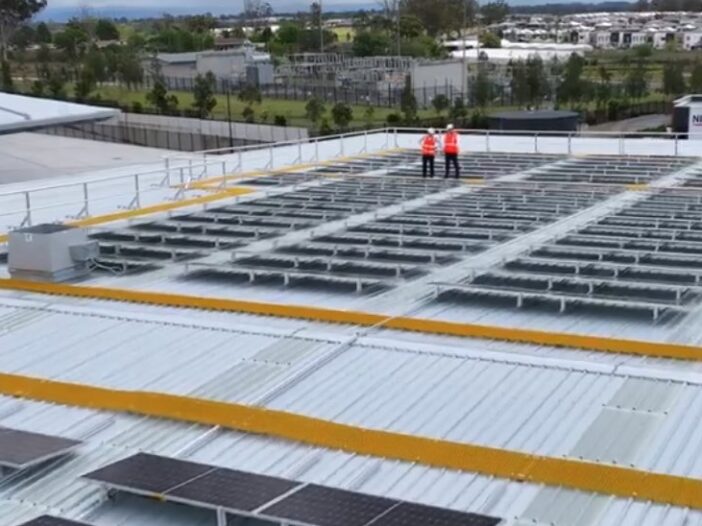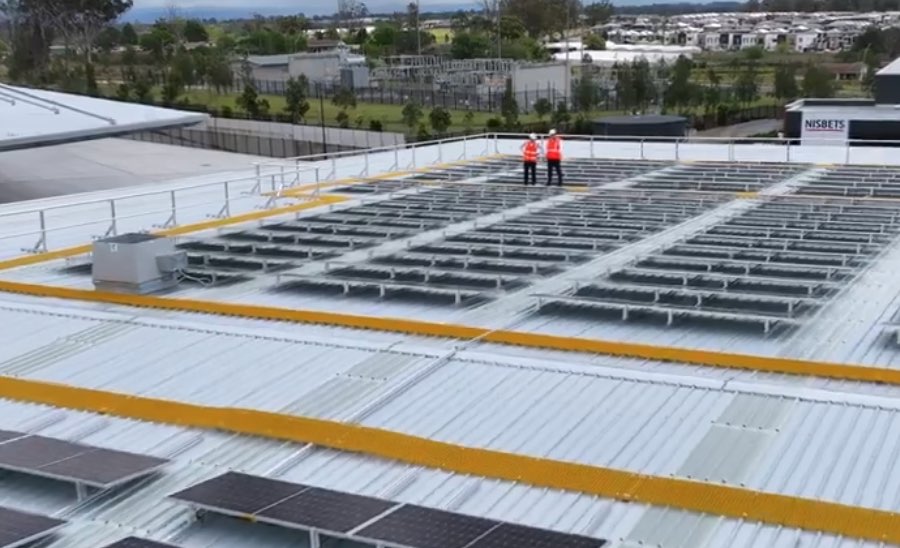
Australian property development giant Stockland Group has announced it will install a further 34MW of solar across its shopping centre and logistics assets, to create a 50MW rooftop solar virtual power plant that will help supply its entire operations with 100 per cent renewables.
The huge PV rollout is part of a new partnership Stockland has entered into with renewables outfit Energy Bay, which will buy Stockland’s existing 17MW of rooftop solar capacity, and install and own an additional 34MW by 2025.
As part of the deal, Energy Bay will manage the solar assets installed across more than 50 buildings and use “inter-asset energy trading” to share the power generated across Stockland’s other commercial buildings and land lease communities.
Under the terms of the agreement, Energy Bay will licence available roof space from Stockland for 30 years allowing it to operate and maintain the embedded networks and manage and sell energy services. Stockland will purchase energy from Energy Bay for 15 years.
Stockland executive general manager, workplace, Emlyn Keane, said the market-leading scheme unlocks the “abundant roof space” of the group’s logistics buildings to trade solar energy across the company’s broader portfolio of assets.
“The partnership allows us to use our own rooftops rather than requiring additional land for solar farms and avoids the premium cost of renewable energy power purchasing agreements,” Keane says.
“The base power demands of logistics assets are low, meaning our town centres and workplaces can draw on the renewable energy generated on these rooftops to offset their consumption, which is typically higher.
“The use of our existing commercial property assets combined with our $6.4 billion logistics pipeline will see approximately 250,000 square metres of solar panels installed on our roofs, the equivalent of around 35 football fields,” Keane says.
Energy Bay CEO James Doyle says the partnership will deliver significant environmental benefits while also establishing a long-term, cost-effective renewable energy solution for Stockland – and helping to meet the company’s target of net zero scope 2 emissions by 2025.
“Through this partnership, Energy Bay will develop, install, and operate a major renewable energy platform, right on the rooftop of Stockland’s vast commercial assets, on-selling the energy produced back to Stockland at a competitive price point,” Doyle says.
“The initiative is a fantastic step in the decarbonisation of the Australian commercial sector,” he adds.
Once all the solar is installed and under management, Stockland will explore how tenants across its property portfolio can join the scheme and potentially drive down their emissions – or Stockland’s scope 3 emissions.
The companies say there are also plans underway for future battery storage to optimise the solar installed at the Stockland sites.
“Australia’s buildings consume around half of the nation’s electricity, and up to 77 per cent of energy network system capacity during peak periods,” says Michael Di Russo, the head of property at the federal government’s green bank, the CEFC.
The CEFC has been working with Stockland since 2019 to accelerate its decarbonisation plans and says the new energy sharing scheme is a significant milestone – and an important demonstration of the innovation needed to support Australia’s energy transition.
“The property industry has a key role to play in continuing to innovate and push to further decarbonise for Australia to meet our emissions reduction targets,” Di Russo says.

Sophie is editor of One Step Off The Grid and deputy editor of its sister site, Renew Economy. Sophie has been writing about clean energy for more than a decade.



